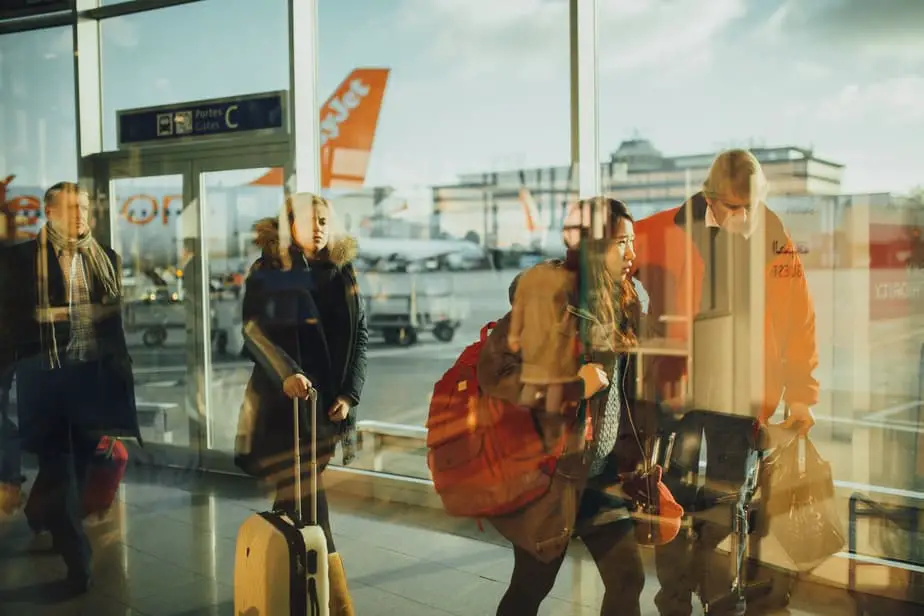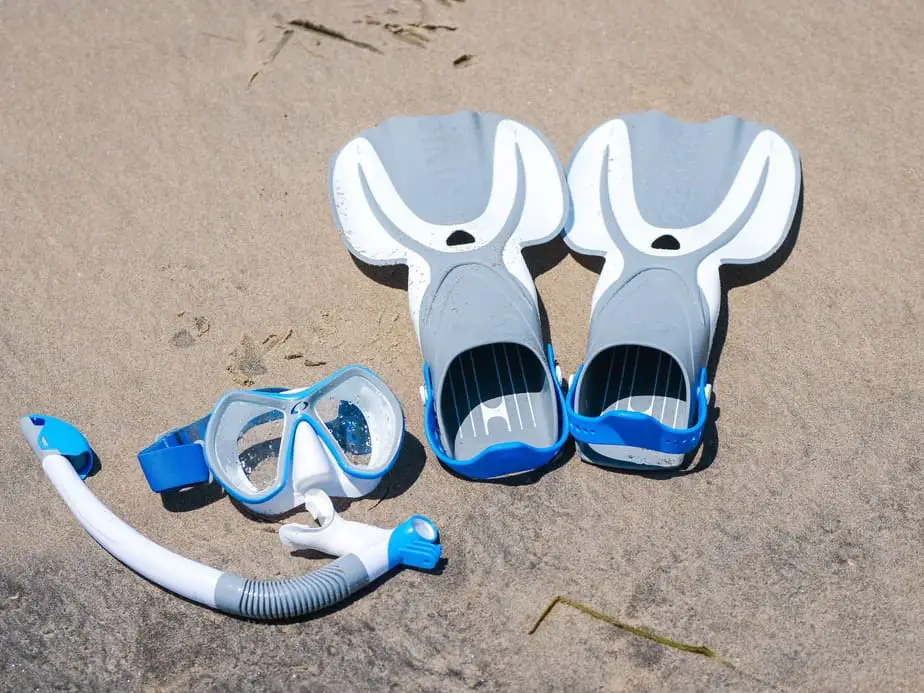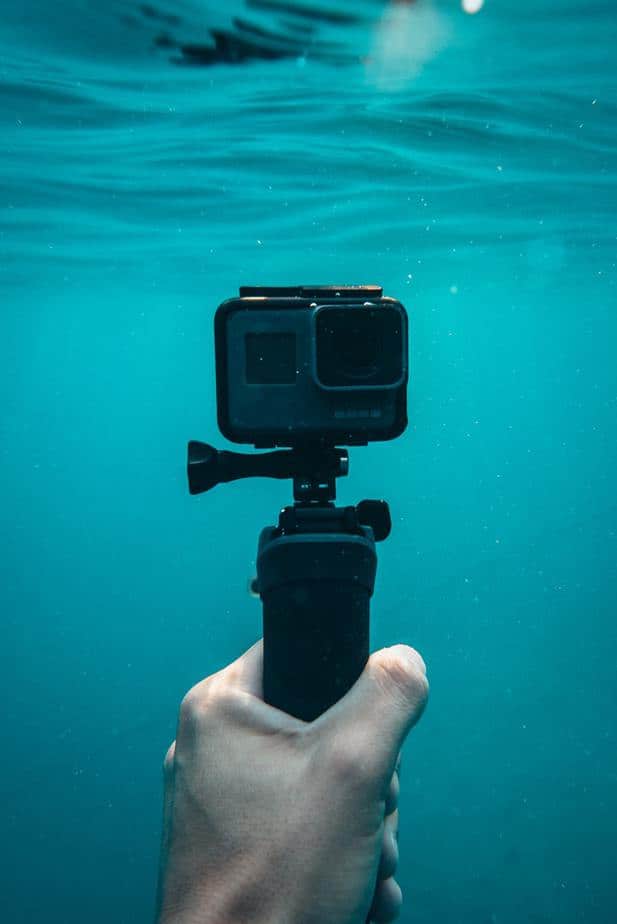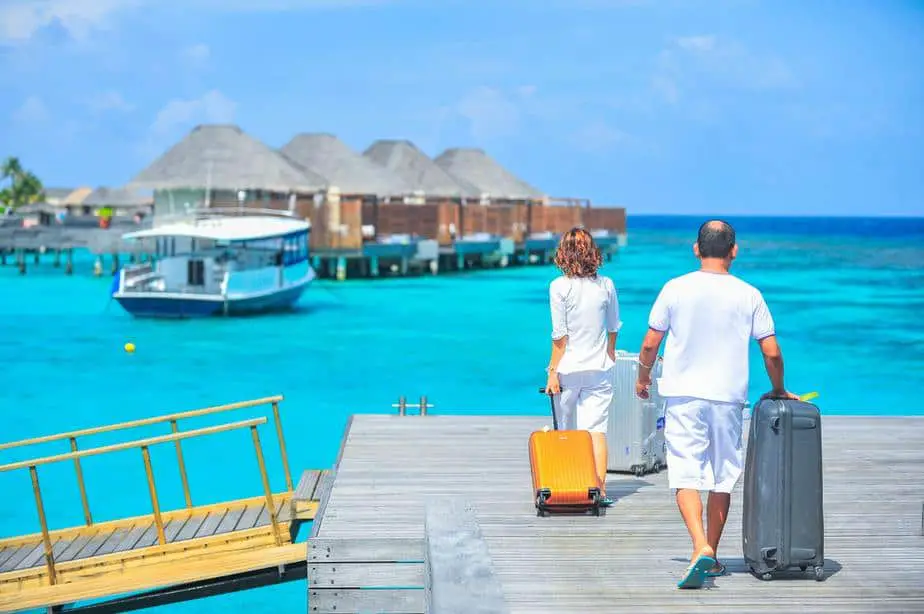Before you go out and buy all of the latest snorkel gear in anticipation of your upcoming vacation, there’s two questions you need to consider first: 1) How will you pack your gear, and 2) Will airport security have any issues with what you’re bringing? Small things like a mask and snorkel are easy to pack. However, larger items like your fins can become a hassle. It’s up to you to decide which pieces of equipment you want to bring with you, and which ones you want to rent.
Can you bring snorkel gear on a plane? Yes, absolutely. With that said, the issue lies in how you can efficiently pack your gear so that it doesn’t occupy too much space and also so it won’t be damaged during transportation. Furthermore, each airline has different rules on what is allowed in the carry-on and what must be checked in. You will need to contact the specific airline you will be using to know exactly what’s allowed, but generally, masks, snorkels, rash guards, wetsuits, and fins are allowed. Examples of items they take issue with are compressed air, dive knives, batteries, and so on.
In this article, we will discuss what kinds of items you can bring aboard an airplane, and what kinds you should avoid. We will also provide tips on how you can efficiently pack your snorkel gear so that it doesn’t take up much space and will not get damaged.
Picking the right airline

There are a few main considerations to keep in mind when choosing the airline you want to travel with. Every airline has different rules, and budget airlines are typically more stringent about following the rules. You can typically expect a maximum carry-on weight limit of 7-10kg; again, some airlines are relaxed, others will literally tell you to remove a pack of tissue from your bag to make the weight.
Most airlines assume that customers will have at least one piece of checked baggage. The weight limit for that is around 20 kg or so, so in total you have about 27 kg of items you can bring without needing to pay extra on many airlines. It’s probably a good idea to put most of your snorkel gear in the checked luggage, especially the fins which would probably be too big for a carry-on bag.
Many airlines have specialty luggage for sports equipment, so you should probably check if your airline does this. You might have noticed in the past when there’s a small pile of equipment, such as a bunch of skis that are being loaded up nearby. This option may be less costly than paying for checked luggage.
The good news is that, when it comes to snorkel gear, the airlines are typically pretty relaxed. There’s nothing particularly dangerous about snorkel gear. The same cannot be said for scuba gear, where one might bring dive knives, electronics with batteries or compressed air. In comparison, a mask and snorkel are pretty harmless.
Airport tips to keep in mind

First things first, you need to have a great attitude and give off a friendly vibe. If you look uncomfortable, nervous, angry, or generally unfriendly, you’re going to have a harder time navigating the airport system.
Seriously, you need to be extremely polite, friendly, and courteous. End your sentences with “sir” or “ma’am”, “please” and “thank you.” You are at the mercy of airport security and customs staff. If they don’t like the cut of your jib, so to speak, they can make life miserable for you. Don’t be defensive if you get singled out or when they ask to check your luggage. Don’t give them an excuse to turn you around.
Next, a note on trolley bags. They may be comfortable to wheel around the airport, however the extra weight could have been useful for packing more snorkel equipment. Lightweight bags such as a duffle bag let you pack more, but the downside is you have to use your muscles a bit more to carry it around.
A trick we learned from observing wildlife photographers and hikers is how much one can pack into clothing with compartments, such as vests or jackets. If you are really cutting it close when it comes to luggage and carry-on capacity, you can squeeze a few more pounds of weight by keeping them in the compartments of your clothing.
Traveling with fins

Out of all the snorkel gear, the fins easily take up the most space in your luggage. If you are bringing your own fins, you will almost certainly need to place them in your checked luggage. The size and weight allowance for carry-on bags makes squeezing a pair of fins in a challenge.
Unless your fins are obscenely long, such as in the case of most freediving fins, you might not be able to bring them with you to the cabin if they exceed the size limits. However, assuming your fins are within them, then there is no technical reason why an airline would stop you from taking fins on a plane. I don’t like to give them any excuse to stop me, so if possible, just put them in checked luggage.
Thankfully, snorkeling equipment is much lighter and fewer in number than scuba equipment. You don’t need to bring a dive torch, BCDs, dive computers, and perhaps not even a wetsuit. Snorkel equipment is basically just beach essentials plus a mask, snorkel, and fins.
If you plan on traveling light, and only for a short period of time, you might not like the idea of having any checked luggage. In that case, you either need a carry-on bag that is slightly longer to accommodate your fins, or to get travel fins, or rent the fins from a dive shop once you’re there. Fins are a space hog so they can really make packing difficult.
It’s technically possible to snorkel without fins, but fins make the experience much more enjoyable with how much propulsion they add to your kicks. Personally, we feel they are worth the space they take up.
Other accessories

You might want to bring other small accessories that can enhance your snorkeling experience. The core items are the mask, snorkel, and fins.
However, we argue that rash guards, reef-safe sunscreen, and mask defogger should also be considered snorkeling essentials. You may need to wear a wetsuit if the water temperature is slightly cooler, though wetsuits take up more space.
Also, you can bring your own flotation device or rent one. Snorkel vests are quite compact because they can be deflated. They are arguably the most space efficient snorkel flotation device compared to a flotation belt or life vest.
You might also want to bring an underwater camera such as a GoPro to record the best moments of your memorable vacation. You probably aren’t going to be bringing a DSLR camera with a waterproof housing and lens, but if you are, that will definitely take up a lot of space. You’ll also need to pack them carefully so that they don’t get damaged.
To save even more space, you can purchase a frameless mask, a collapsible snorkel, and compact fins to save even more space. The downside of a collapsible snorkel is that it will be an open top design, which has no mechanisms to keep water from entering, increasing the risk of swallowing water.
You should also bring a few dry bags (you can never have enough of them) to keep your gear dry. These bags can easily fit in a carry-on bag when traveling by plane.
Heck, apparently people have even managed to bring their sea scooters with them by plane. Your mileage may vary, but apparently it’s been done. Obviously we’re talking about a smaller, compact model, not one of those huge hulking ones that are like a jet-ski.
Carry-on or checked luggage?

There’s no rule written in stone about this, and you may want to do things differently depending on how long you’ll be away for.
For shorter trips where you know you’ll be doing some snorkeling, you can try to squeeze everything into a carry-on bag. Mask, snorkel, fins, the whole lot. You might want to get short fins or even just rent the fins at your destination because fins will take up the most space. For a short trip, you don’t need to bring as much clothing.
Longer trips require you to bring more clothes and other miscellaneous items. In that case, checked luggage is a necessity. You can keep a traditional mask and snorkel in the carry-on, but larger items like fins, a full face mask, a wetsuit and so on need to go into checked luggage. If you tend to snorkel in warmer places, you might not even need a wetsuit, however we still recommend a rash guard at the minimum.
There’s no science to this, and honestly, most of it is just common sense. How good your packing skills are can play a big part in how much you can fit into your luggage, which we discuss in the next section.
Additional luggage packing tips
Are you the type to toss a pile of clothes into your bag and pray that the zipper can keep everything from exploding? Why not channel Marie Kondo and pack in a way that sparks joy (get rid of any items that don’t make your heart go “kyun!”, as she would endearingly say).
What that basically means is to be honest with yourself about the items you’ll actually wear, or if you’ll even get good use out of them during the length of your trip. If not, don’t pack them so that you can free up more space for your snorkel gear and to stay under the baggage limits.
When you’re packing your snorkel gear, be careful not to put any heavy items on them. Even things like your wetsuit and snorkeling fins, which are made of durable neoprene, can get damaged or scratched if they are not packed properly. Try to keep a layer of clothing around your snorkel gear to cushion them and prevent them from shifting around during transportation.
For instance, if you are bringing expensive underwater camera equipment like lenses, try to roll them up inside your socks. You can also ball them up in your wetsuit/rash guard and then place another layer of clothes around it so it doesn’t press against anything hard that could leave an imprint.
As you’ll see in the video above, smaller items, particularly things like batteries, can be kept in a plastic container to protect them from moisture and damage. Ziplock bags can also be quite handy in this regard, however make sure they don’t end up in the ocean where they can be dangerous to the aquatic creatures.
If you have a companion with you, split the snorkel gear between different bags so that if one gets lost, you will only have lost half of your gear instead of all of them.
Parting words
To sum it up, yes you can bring snorkel gear on a plane. Snorkel gear is basically the same as beach gear with a few extras like the mask and snorkel. Unlike scuba gear, snorkel gear is much lighter, less of a hazard, and very compact in comparison. There’s no need to complicate things, the most essential gear are the mask, snorkel, and fins.
As long as you have a good fitting mask and snorkel, you can arguably just rent everything else. A hybrid approach can make things much easier. You could rent the fins and wetsuit from the dive shops at the destination instead of packing your own. Everyone has different tolerances to renting, however, due to hygienic reasons. We don’t fault them, especially since COVID-19 has basically drilled into everybody’s heads the importance of sanitizing everything.
Sometimes there is a bit of luck involved with how easily you can get past security. Some people seem to have a twinkle in their eye that lets them through easily, while others get so nervous they become suspicious. Try to be as friendly and polite as possible. As long as you’re not carrying equipment that is definitely banned, you’ll be fine.
Snorkeling gear does not fall under the category of banned equipment unless you brought a dive knife with you. However, if an official sees you with fins, they may single you out to double check you’re not carrying compressed air.
As long as you use common sense when packing, there’s no reason why you couldn’t fit your snorkel gear in your luggage. If the fins don’t quite fit the carry-on, then move them to the checked luggage. The biggest issue is not whether they’ll fit, but rather if they will survive the trip undamaged. Wrap all of your snorkel gear in your regular clothing to protect them during transportation.
Last update on 2024-07-15 / Affiliate links / Images from Amazon Product Advertising API


